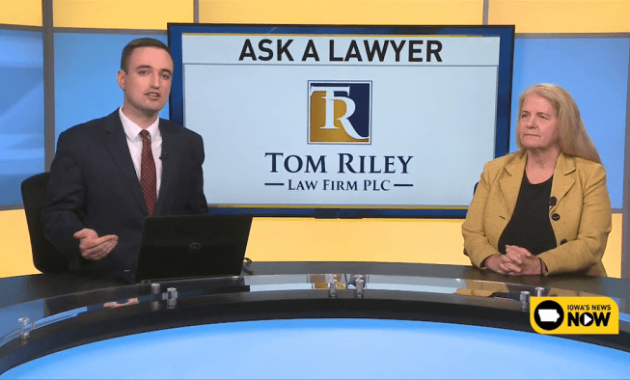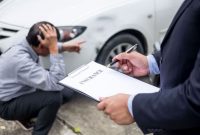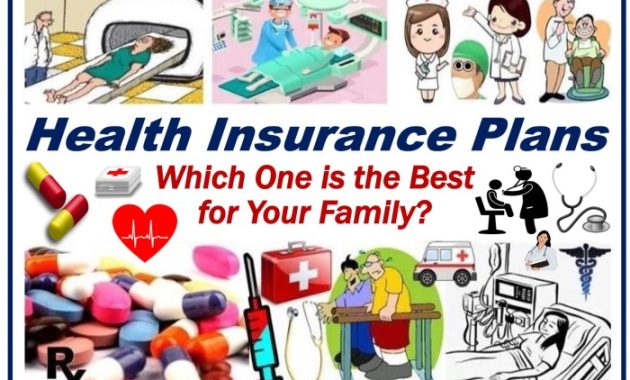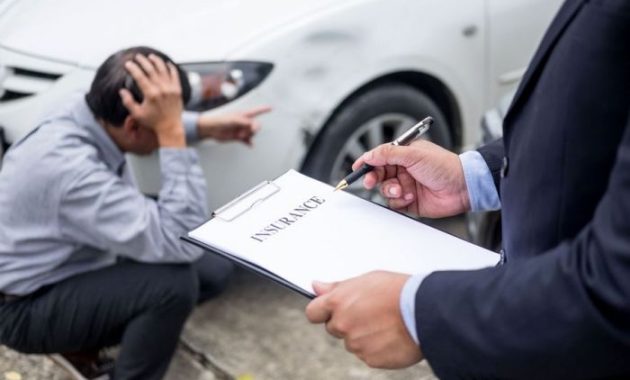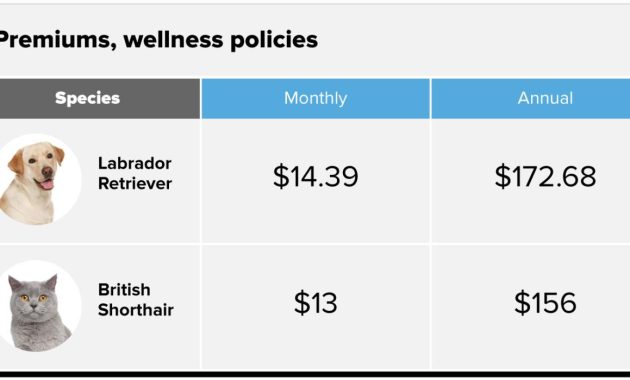Understanding the Legal Landscape of Uninsured Motorist Claims
Car accident lawyer no insurance – Navigating the aftermath of a car accident is stressful enough, but dealing with an uninsured driver adds a whole new layer of complication. In Jakarta Selatan, like many places, understanding your rights and the legal process is crucial to getting the compensation you deserve. This guide breaks down the complexities of uninsured motorist claims, offering a practical, South Jakarta-style perspective.
Uninsured Motorist Claim Variations Across Jurisdictions
The legal framework surrounding uninsured motorist (UM) claims varies significantly across different jurisdictions. For instance, some states have mandatory UM coverage, meaning all drivers must carry it, while others allow drivers to opt out. The amount of UM coverage available also differs, with some states setting minimum limits while others allow for higher coverage amounts. Furthermore, the legal process for filing a claim, including deadlines and evidentiary requirements, can vary considerably.
For example, in some jurisdictions, proving negligence on the part of the uninsured driver might be straightforward, while others may require a higher burden of proof. Understanding the specific laws in your area, whether it’s Jakarta Selatan or elsewhere, is key to a successful claim.
Filing a Claim Against an Uninsured Driver’s Insurance Policy
If the at-fault driver does have insurance, even if minimal, filing a claim directly against their insurer is the first step. This involves providing the insurer with detailed information about the accident, including a police report, medical records, and photos of the damage. The insurer will then investigate the claim and determine liability. Negotiations regarding settlement often follow.
However, if the at-fault driver’s insurance policy limits are insufficient to cover your damages, you may still need to pursue a claim under your own UM coverage.
Pursuing a Claim Against Your Own Uninsured/Underinsured Motorist Coverage
A step-by-step guide to pursuing a claim under your own UM/UIM coverage typically involves: 1) Notifying your insurer promptly of the accident, providing all relevant documentation. 2) Cooperating fully with your insurer’s investigation, which may include providing a recorded statement and attending medical evaluations. 3) Submitting a detailed claim outlining your losses, including medical bills, lost wages, property damage, and pain and suffering.
4) Negotiating a settlement with your insurer. If negotiations fail, you might need to consider legal action. Remember, the process can be complex, so having legal representation is often beneficial.
Legal Challenges: Uninsured vs. Insured Motorist Claims, Car accident lawyer no insurance
Pursuing a claim against an uninsured driver presents several unique challenges compared to claims against insured drivers. With an uninsured driver, you’re essentially pursuing a claim against a party with no insurance assets to tap into. This contrasts sharply with claims against insured drivers, where the insurance company is directly involved and responsible for handling the claim and settlement.
In uninsured cases, you must rely on your own UM coverage, which may involve stricter requirements and a more rigorous process. Gathering evidence to prove negligence can also be more challenging when dealing with an uninsured driver, as they may be less cooperative or even unavailable. Furthermore, the potential recovery might be limited by your own UM policy limits.
Gathering Evidence After an Accident Involving an Uninsured Driver
Okay, so you’ve been in a fender bender, and the other driver? No insurance*. Total Jakarta Selatan nightmare, right? Don’t panic. Acting quickly and smartly can make all the difference in getting the compensation you deserve.
This means securing the right evidence at the scene. Think of it as your legal arsenal – the stronger it is, the better your chances of winning.Gathering the right evidence immediately after a car accident with an uninsured driver is crucial. Your ability to build a strong case hinges on the thoroughness and accuracy of your evidence collection.
Remember, the other driver’s lack of insurance doesn’t lessen your right to compensation for your damages.
Essential Evidence Checklist
A comprehensive approach to evidence gathering is key. This means more than just a quick glance; it’s about methodical documentation of everything relevant to the accident. Failing to gather this evidence could severely impact your claim.
- Police Report: This is your golden ticket. Make sure you get a copy – it’s the official record of the incident, including details of the accident, witness statements, and any citations issued.
- Driver’s Information: Even without insurance, get the other driver’s license, registration (if possible), and contact information. This might seem obvious, but in the chaos, it’s easily missed.
- Witness Information: Get names, phone numbers, addresses, and email addresses of any witnesses. The more witnesses, the stronger your case.
- Vehicle Damage Documentation: Take detailed photos of your vehicle’s damage from all angles. This includes the front, back, sides, and interior.
- Accident Scene Photos: Capture the overall scene, showing the position of the vehicles, any skid marks, traffic signs, and road conditions. Wide shots and close-ups are essential.
- Medical Records: If you sustained injuries, seek immediate medical attention and document everything. Keep copies of all medical bills, doctor’s notes, and therapy records.
Documenting Witness Statements
Don’t just grab contact details; get the full story. A detailed account from each witness can significantly strengthen your claim. This includes their perspective on how the accident occurred, the speed of the vehicles involved, and any contributing factors.
- Contact Information: Obtain full names, phone numbers, email addresses, and addresses of each witness.
- Written Statements: If possible, ask witnesses to write down their account of the accident. This adds a level of formality and accuracy to their testimony.
- Recorded Statements: If you’re comfortable, record brief interviews with witnesses using your phone. Make sure you obtain their consent beforehand. This is an added layer of detail.
Importance of Photographic Evidence
Photos speak louder than words, especially in a court of law. High-quality images can provide irrefutable proof of the accident’s severity and the damage caused. Remember, a picture is worth a thousand words, especially when dealing with an uninsured driver.
- Multiple Angles: Take photos from various angles, including wide shots of the scene and close-ups of damage to your vehicle and the other driver’s vehicle.
- Environmental Details: Capture details such as road conditions, traffic signals, and any other relevant factors that contributed to the accident.
- Time and Date Stamps: Ensure your camera’s time and date settings are accurate. This adds credibility to your photographic evidence.
Preserving Vehicle Damage
Don’t rush to get your car fixed! The damage to your vehicle serves as visual evidence of the accident’s impact. Maintaining the status quo of the damage is vital for your case.
- Avoid Repairs: Refrain from repairing your vehicle until your lawyer has had a chance to inspect the damage and document it thoroughly. This is crucial, especially with an uninsured driver.
- Professional Assessment: Have your vehicle inspected by a qualified mechanic or body shop. They can provide a detailed assessment of the damage and its repair costs.
- Documentation of Damage: Take detailed photos and videos of the damage from various angles before any repairs are undertaken. This will help support your claim for compensation.
Determining Liability in Uninsured Motorist Accidents
Figuring out who’s at fault in a car accident is usually straightforward, but things get a bit morecomplicated* when the other driver doesn’t have insurance. In Jakarta Selatan, where everyone’s always rushing, these situations can be especially tricky. This section will break down how liability is determined in these cases and the challenges involved.Determining liability in accidents involving uninsured motorists relies heavily on the same principles as any other car accident: proving negligence.
Essentially, you need to show that the other driver acted carelessly or recklessly, causing the accident and your resulting injuries or damages. However, the absence of insurance adds a layer of complexity to the process.
Common Factors Determining Liability
Establishing liability often involves examining witness testimonies, police reports, photos of the accident scene (imagine the chaotic aftermath on Jalan Sudirman!), and any available security camera footage. The police report, while not legally binding, provides a crucial initial assessment. Crucially, physical evidence like skid marks or damage to the vehicles can strongly suggest who was at fault. Expert testimony from accident reconstruction specialists might also be necessary in complex cases.
Think of it as building a strong case, like assembling a really good
nasi goreng* – you need all the right ingredients.
Navigating the complexities of a car accident without insurance requires immediate legal counsel. Securing compensation often hinges on establishing liability, a process significantly impacted by the availability of insurance information for all parties involved. Understanding the insurance landscape, such as options available through providers like those offering car insurance newtown , is crucial in these cases. Therefore, consulting a car accident lawyer specializing in uninsured motorist claims is paramount to protecting your rights and pursuing just compensation.
Challenges in Proving Liability with an Uninsured Driver
Proving liability becomes tougher when the at-fault driver is uninsured because they might be less cooperative. They may avoid contact, refuse to give a statement, or even deny responsibility altogether. This lack of cooperation makes gathering evidence more difficult and may require more creative investigative work. For instance, you might need to rely more heavily on independent witnesses or security footage to establish the sequence of events.
This is where a good lawyer, experienced in navigating Jakarta’s legal system, becomes invaluable.
Examples of Situations with Unclear Liability
Liability can be especially murky in situations with multiple vehicles or unclear road conditions. Imagine a three-car pile-up on a rainy day in Kebayoran Baru – it’s a nightmare to determine who is primarily responsible. Similarly, accidents at intersections where drivers have conflicting claims of right-of-way can be challenging to resolve. These cases often necessitate a thorough investigation and expert analysis to determine the precise sequence of events leading to the accident.
Key Legal Elements to Establish Fault
To successfully establish fault, you need to demonstrate: 1) the other driver owed you a duty of care (they had a responsibility to drive safely); 2) they breached that duty (they drove negligently); 3) their negligence directly caused the accident; and 4) you suffered damages as a result (medical bills, property damage, pain and suffering). Proving all four elements is critical, particularly when dealing with an uncooperative uninsured driver.
Strong evidence is paramount, and that’s where your legal representation becomes crucial.
Negotiating with Insurance Companies (Your Own and the Uninsured Driver’s, if Applicable): Car Accident Lawyer No Insurance

Navigating the insurance claim process after a car accident in Jakarta Selatan can feel like wading through a swamp of paperwork and legal jargon. But don’t worry, understanding your rights and employing smart negotiation tactics can significantly improve your chances of securing a fair settlement. Remember, you’re not alone in this; many Jakartans face similar situations.Dealing with insurance companies, both your own and potentially the uninsured driver’s (if they have any coverage at all!), requires a strategic approach.
This involves knowing your rights, documenting everything meticulously, and communicating clearly and assertively. The goal is to get the compensation you deserve for your medical bills, lost wages, pain, and suffering.
Effective Strategies for Negotiating a Fair Settlement with Your Own Insurance Company
Negotiating with your own insurance company, even after an accident with an uninsured driver, should be approached with a calm, prepared mindset. Document everything thoroughly: medical records, repair estimates, lost wage statements, and photos of the accident scene and your injuries. This detailed documentation will serve as your strongest bargaining chip. Don’t hesitate to engage a lawyer if you feel overwhelmed or unsure of how to proceed.
They’ll be able to help you gather all necessary documentation and present your case in the most effective manner. A strong case is based on solid evidence.
Potential Tactics Used by Insurance Companies to Minimize Payouts in Uninsured Motorist Claims
Insurance companies, unfortunately, often employ tactics to minimize their payouts. One common tactic is to lowball initial settlement offers, hoping you’ll accept less than you’re entitled to. They might also try to downplay the severity of your injuries or challenge the validity of your medical expenses. They may even attempt to assign partial blame to you, even if you were not at fault.
Understanding these tactics allows you to anticipate them and counter them effectively. For example, they might claim your injuries are not directly related to the accident, requiring you to strongly present medical evidence supporting the direct connection.
Effectively Communicating the Extent of Your Injuries and Damages
Clearly and comprehensively documenting the extent of your injuries and damages is crucial. This involves providing detailed medical records, including doctor’s notes, therapy records, and any ongoing treatment plans. Quantify your lost wages by providing pay stubs and employment verification. Don’t underestimate the impact of pain and suffering; these are legitimate components of your claim, and you should articulate their effect on your daily life.
Use specific examples; for instance, instead of saying “I’m in pain,” explain how the pain limits your ability to work, exercise, or participate in social activities. A strong case builds on detailed descriptions of impact on your life.
Appealing a Denied or Low-Ball Settlement Offer
If your insurance company denies your claim or offers a settlement you deem inadequate, you have the right to appeal. This usually involves a formal written appeal, supported by all the evidence you’ve gathered. Clearly state your disagreement with their decision, citing specific points of contention and providing supporting documentation. If the appeal is unsuccessful, you might need to consider legal action.
Many lawyers offer free initial consultations, allowing you to discuss your options and determine the best course of action. Remember, persistence and a well-documented case are your best allies.
Preparing for and Pursuing Legal Action
Navigating the legal system after a car accident with an uninsured driver in Jakarta Selatan can feel like wading through a swamp of paperwork and procedures. But don’t worry, understanding the process can make it significantly less daunting. This section Artikels the steps involved in pursuing legal action, ensuring you get the compensation you deserve.
Filing a lawsuit against an uninsured driver in Indonesia requires careful planning and execution. Remember, patience and a strong legal team are your best allies.
Filing a Lawsuit Against an Uninsured Driver
Filing a lawsuit involves formally initiating legal proceedings against the at-fault driver. This begins with drafting a detailed complaint outlining the accident, the injuries sustained, the damages incurred, and the legal basis for your claim. The complaint must be meticulously prepared, citing relevant Indonesian traffic laws and regulations. This is usually done with the assistance of a lawyer specializing in personal injury cases.
The complaint is then submitted to the appropriate court, which will assign a case number and initiate the legal process. The specific court depends on the location of the accident and the value of the claim.
Serving Legal Documents to the Uninsured Driver
Serving legal documents, such as the complaint and summons, to the uninsured driver is crucial for establishing the court’s jurisdiction over them. This process ensures the defendant is officially notified of the lawsuit. In Indonesia, official service can be complex, and often requires the assistance of a legal professional. They will employ methods compliant with Indonesian legal procedures, potentially including personal service, substituted service (if personal service is impossible), or service by publication (in specific circumstances).
Failure to properly serve the defendant can significantly impact the progress of the case.
Building a Strong Legal Case
Building a robust legal case requires meticulous attention to detail. This involves more than just recounting the accident. A strong case is built upon a foundation of irrefutable evidence. This could include police reports, witness testimonies, medical records documenting injuries and treatment, photographs of the accident scene and vehicle damage, and repair bills. Expert witness testimony is invaluable.
For example, a medical expert can testify to the extent and nature of your injuries, while a vehicle damage expert can assess the cost of repairs and the severity of the damage, directly linking it to the accident. A strong legal strategy, incorporating all this evidence, significantly strengthens your claim.
Timeline of the Typical Legal Process
The timeline for an uninsured motorist accident case in Indonesia can vary significantly depending on the complexity of the case, the court’s workload, and the defendant’s response. However, a typical timeline might look like this:
It is important to note that this is a general estimate, and the actual timeline can be longer or shorter. Factors such as appeals or procedural delays can extend the process. Consulting with a lawyer is crucial for a realistic assessment of your case’s timeline.
| Stage | Estimated Timeframe | Description |
|---|---|---|
| Filing the lawsuit | 1-2 weeks | Preparing and submitting the complaint to the court. |
| Service of process | 2-4 weeks | Serving the defendant with legal documents. |
| Defendant’s response | 2-6 weeks | The defendant files an answer or other response to the complaint. |
| Discovery phase | 2-6 months | Gathering evidence through depositions, interrogatories, and document requests. |
| Trial preparation | 2-4 months | Preparing for trial, including witness preparation and exhibit compilation. |
| Trial | 1-3 weeks | Presenting evidence and arguments before the court. |
| Judgment and appeal (if applicable) | 2-6 months | The court renders a judgment, which can be appealed by either party. |
Understanding Damages in Uninsured Motorist Cases
Navigating the aftermath of a car accident caused by an uninsured driver in Jakarta Selatan can be stressful, but understanding what damages you can recover is crucial. This section clarifies the types of compensations you might be entitled to and how to effectively document them to strengthen your claim. Remember, consulting with a reputable lawyer specializing in uninsured motorist claims is highly recommended to ensure you receive the maximum compensation you deserve.
In uninsured motorist claims, you can seek compensation for a wide range of losses stemming from the accident. These losses are broadly categorized as economic and non-economic damages. Proper documentation is key to successfully claiming these damages.
Types of Recoverable Damages
Economic damages are those that have a readily quantifiable monetary value. These are easier to prove as they involve concrete financial losses. Non-economic damages, on the other hand, are more subjective and require careful documentation and persuasive argumentation.
Examples of economic damages include:
- Medical Bills: This encompasses all medical expenses incurred as a direct result of the accident, including hospital stays, doctor visits, physiotherapy, medication, and any other related treatments. Keep all receipts, bills, and insurance statements related to these expenses.
- Lost Wages: If the accident prevented you from working, you can claim compensation for lost income. Documentation should include pay stubs, employment contracts, tax returns, and a letter from your employer confirming the period of your absence and lost earnings.
- Property Damage: This covers the repair or replacement costs of your vehicle and any other damaged property. Obtain repair estimates, invoices for repairs completed, and photographs of the damage before and after repairs.
Non-economic damages are more challenging to quantify, but equally important:
- Pain and Suffering: This compensates for the physical and emotional distress experienced due to the accident. Documentation includes medical records detailing injuries and their impact on your daily life, along with personal statements describing the pain and suffering endured.
- Emotional Distress: This accounts for psychological trauma such as anxiety, depression, or PTSD resulting from the accident. Therapy records, psychiatrist reports, and personal statements describing the emotional impact are crucial.
- Loss of Consortium: If the accident affected your ability to enjoy your relationship with your spouse or partner, this damage compensates for that loss. This requires documentation of the impact on the relationship and supporting statements.
Calculating and Documenting Damages
Accurate calculation and thorough documentation are critical for a successful claim. For medical bills, simply add up all expenses. For lost wages, calculate your average daily or weekly income multiplied by the number of days or weeks missed from work. For property damage, use repair estimates or invoices.
Non-economic damages are more complex. There’s no single formula. Instead, lawyers often use multipliers based on medical expenses or a combination of factors to estimate a fair compensation. For instance, a multiplier of 1.5 to 3 times the medical expenses is sometimes used for pain and suffering, but this varies greatly depending on the severity of the injuries and the jurisdiction.
Examples of Successful Settlements
While specific settlement amounts are confidential, successful cases often involve comprehensive documentation of all damages, strong medical evidence linking injuries to the accident, and compelling testimony from the victim and witnesses. A case involving a severe injury resulting in long-term disability and significant medical expenses would naturally command a larger settlement than a case with minor injuries and minimal medical treatment.
The strength of the evidence presented and the skill of the legal representation are key contributing factors.
Documentation Needed to Support Damage Claims
Maintaining meticulous records is paramount. This includes:
- Police report
- Medical records (doctor’s notes, hospital bills, therapy records)
- Pay stubs and employment records
- Repair estimates and invoices for vehicle and property damage
- Photographs of the accident scene and injuries
- Witness statements
- Personal diary or journal entries detailing the impact of the accident
The Role of a Car Accident Lawyer in Uninsured Motorist Cases
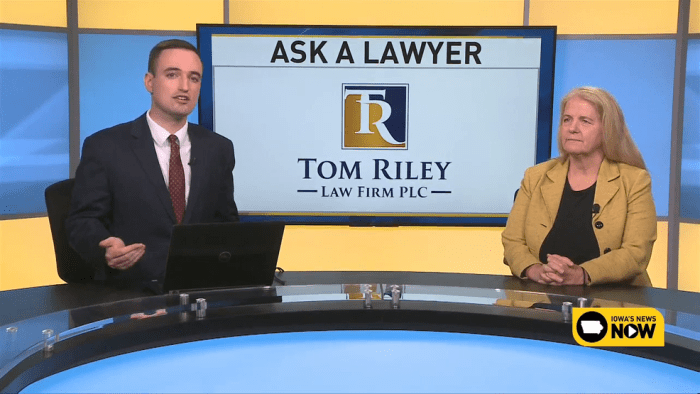
Navigating the aftermath of a car accident, especially one involving an uninsured driver, can feel like wading through a murky swamp in Jakarta’s South traffic. It’s stressful, confusing, and frankly, unfair. That’s where a car accident lawyer steps in, acting as your trusted guide and advocate through this complex legal terrain. They’re not just there to file paperwork; they’re your strategic partner in securing the compensation you deserve.A car accident lawyer offers significant advantages in uninsured motorist cases.
Their expertise ensures you’re not left to fend for yourself against insurance companies who might try to minimize your claim. They possess the knowledge of the law, the experience in negotiations, and the resources to build a strong case, maximizing your chances of a fair settlement. This is particularly crucial in Jakarta, where navigating insurance complexities can be challenging.
Think of them as your ace in the hole, expertly playing the hand dealt to you after the accident.
Lawyer’s Tasks in Uninsured Motorist Cases
A lawyer’s role goes far beyond simply filling out forms. They meticulously investigate the accident, gathering evidence such as police reports, medical records, witness statements, and photos of the damage. They thoroughly analyze your insurance policy to understand your coverage under uninsured/underinsured motorist (UM/UIM) provisions. They handle all communication with your insurance company and the at-fault driver’s insurer (if applicable), negotiating for a fair settlement.
If a settlement cannot be reached, they prepare and file a lawsuit, representing you in court. They also work to calculate all your damages, including medical bills, lost wages, pain and suffering, and property damage, ensuring no stone is left unturned.
Negotiating Settlements vs. Pursuing Litigation
The approach a lawyer takes—negotiation or litigation—depends on various factors, including the strength of your case, the insurance company’s willingness to negotiate, and your personal preferences. Negotiation involves attempting to reach a mutually agreeable settlement outside of court. This is often faster and less expensive than litigation. However, if negotiations fail, litigation becomes necessary. Litigation involves filing a lawsuit and presenting your case before a judge or jury.
While potentially more time-consuming and costly, litigation offers the chance to pursue a larger settlement or judgment than what might be offered through negotiation. For example, a strong case with clear evidence of negligence might lead to a successful negotiation, while a weaker case might necessitate a more aggressive litigation strategy.
Potential Costs of Hiring a Lawyer
The cost of hiring a car accident lawyer for an uninsured motorist claim varies based on several factors, including the complexity of the case, the lawyer’s experience, and the amount of time and resources required. Many lawyers work on a contingency fee basis, meaning they only get paid if they win your case, typically taking a percentage of your settlement or judgment.
This can alleviate financial pressure upfront. However, it’s important to discuss all fees and expenses upfront with your lawyer to understand the potential costs involved, ensuring transparency and preventing unexpected bills. It’s a worthwhile investment considering the potential financial recovery. Think of it as a strategic investment, similar to investing in a high-yield asset in the Jakarta stock market.
Illustrative Case Studies (Create hypothetical scenarios, not real cases)
Understanding the complexities of uninsured motorist claims is best achieved through examining specific scenarios. These hypothetical case studies illustrate various challenges and outcomes, offering a clearer picture of the legal process. Remember, each case is unique, and the results depend on specific facts and jurisdiction.
The following case studies highlight different aspects of navigating uninsured motorist claims in Jakarta Selatan. They showcase the importance of evidence gathering, legal representation, and understanding the nuances of Indonesian law in such situations.
Hypothetical Case Studies of Uninsured Motorist Claims
Below are three hypothetical cases, each presenting unique challenges and outcomes in uninsured motorist claims. These scenarios demonstrate the variability and complexities involved in such legal matters.
- Case 1: The Hit and Run
– Accident Description: Ms. Ani was stopped at a red light in Kemang when a motorbike, driven recklessly, rear-ended her car. The motorcyclist fled the scene without providing any information. Ms. Ani suffered whiplash and significant damage to her vehicle.
– Legal Challenges: Identifying the at-fault driver was the primary challenge. Ms. Ani had to rely on witness testimonies and CCTV footage to build her case. Proving the extent of her injuries and vehicle damage also required medical reports and repair estimates.
– Outcome: With strong evidence and legal representation, Ms. Ani successfully filed a claim under her uninsured motorist coverage. Her insurance company compensated her for medical expenses, lost wages, and vehicle repairs.
- Case 2: The Underinsured Driver
– Accident Description: Mr. Budi was involved in a collision with a taxi in Menteng. The taxi driver was at fault, but his insurance coverage was minimal, insufficient to cover Mr. Budi’s medical bills and vehicle damage. Mr.
Budi suffered a broken leg and his car was totaled.
– Legal Challenges: Mr. Budi had to pursue a claim against both his own uninsured motorist coverage and the taxi driver’s limited insurance policy. He needed to prove the extent of his injuries and vehicle damage to maximize his recovery. Negotiating with both insurance companies presented a complex challenge.
– Outcome: Mr. Budi’s lawyer successfully negotiated a settlement with both insurance companies, resulting in a payout that covered his medical expenses, lost wages, and the value of his vehicle.
- Case 3: The Disputed Liability
– Accident Description: Ms. Citra was involved in a minor collision with another car in Senopati. Both drivers claimed the other was at fault. Ms. Citra sustained minor injuries and her car had superficial damage.
The other driver did not have insurance.
– Legal Challenges: Determining liability was the main challenge. Both drivers had differing accounts of the accident. Ms. Citra needed to gather compelling evidence, including witness statements and potentially police reports, to support her claim.
– Outcome: Due to insufficient evidence to definitively prove the other driver’s fault, Ms. Citra’s claim under her uninsured motorist coverage was partially successful. She received compensation for a portion of her medical expenses and vehicle repairs.
Summary of Hypothetical Case Studies
The following table summarizes the key facts, legal challenges, and outcomes of the three hypothetical case studies.
| Case Number | Key Facts | Legal Challenges | Outcome |
|---|---|---|---|
| 1 | Hit and run; Ms. Ani suffered whiplash and vehicle damage; fleeing driver. | Identifying the at-fault driver; proving injury and damage extent. | Successful claim under uninsured motorist coverage; full compensation. |
| 2 | Collision with underinsured taxi; Mr. Budi suffered a broken leg and vehicle totaled. | Claim against own uninsured motorist coverage and limited taxi insurance; negotiating with two insurers. | Successful negotiation; compensation covering medical, wages, and vehicle value. |
| 3 | Minor collision with uninsured driver; disputed liability; minor injuries and damage. | Determining liability; gathering sufficient evidence. | Partially successful claim; partial compensation for expenses and repairs. |

